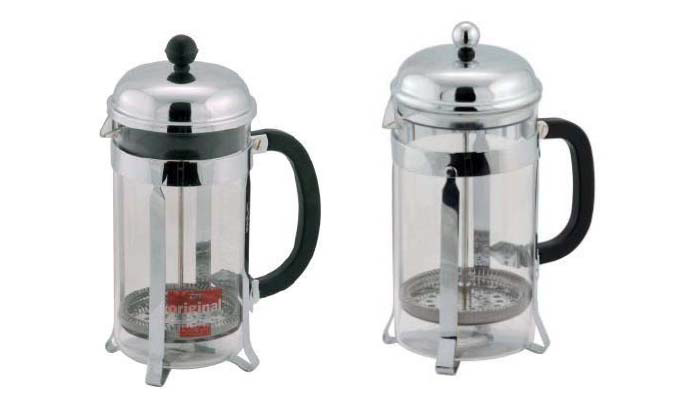Trade dress can include the shape or configuration a product or packaging. Trade dress is protectable if, among other things, it serves to identify a source of goods or services, as a trademark does, and it is nonfunctional. The question of what is nonfunctional was addressed in a recent case involving a french press coffee maker.
Bodum USA sued A Top New Casting alleging infringement of Bodum’s trade dress in the product configuration of its Chambord french press coffee maker. Below is a comparison of the products at issue with the Bodum’s product on the left and A Top’ s product on the right (from the court opinion):

Bodum claimed trade dress protection in the overall appearance of its product, with the following elements identified as contributing to that appearance: “the metal band surrounding the carafe that forms support feet and the handle attachment, the domed lid, the rounded knob atop the plunger, and the Câ€shaped handle.”
A Top argued that Bodum failed to establish that these claimed features where not essential to the product’s use and therefore nonfunctional. Yet the court distinguished the common meaning of functional from the meaning used in trade dress law.
The court said that “to establish it has a valid trade dress, Bodum did not have to prove that something like a handle does not serve any function.” The court continued, “It merely needed to prove that preventing competitors from copying the Chambord’s particular design would not significantly disadvantage them from producing a competitive and costâ€efficient French press coffeemaker.”
According to the court, Bodum was not claiming that any French press coffeemaker with a handle, a domed top, or metal around the carafe infringes on its trade dress. Instead it was objecting to the overall appearance of A Top’s product, which included “the same shaped handle, the same domed lid, the same shaped feet, the same rounded knob, and the same shaped metal frame as the Chambord.”
The court found that Bodum presented sufficient evidence for a jury to conclude that the claimed trade dress was nonfunctional under trade dress law, even though the claimed trade dress included elements that had a function.
Citation: Bodum USA, Inc. v. A Top New Casting Inc., No. 18-3020 (7th Cir. 2019).